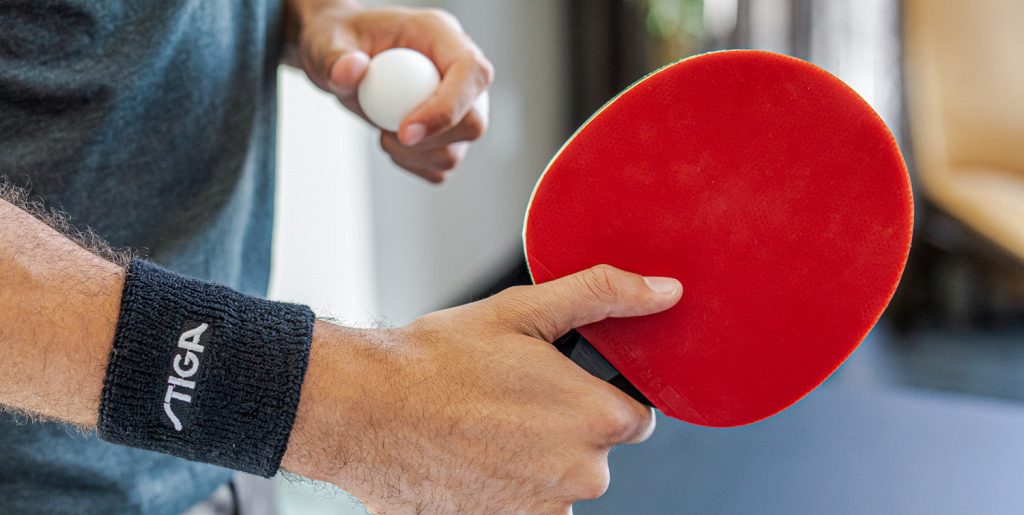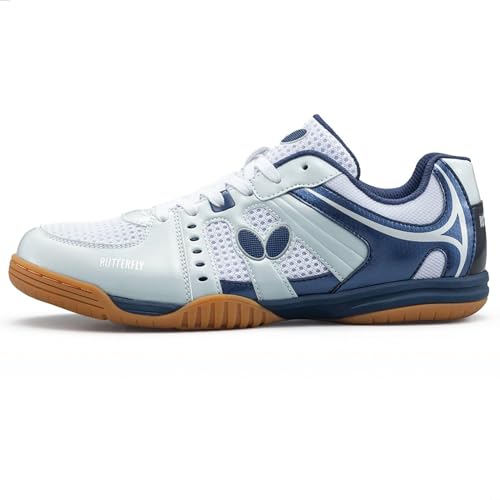Holding a ping pong racket correctly is essential for playing well. It can impact your control and power during a game.
In this guide, you will learn the proper way to hold a ping pong racket, improving your skills and enjoyment of the sport. Ping pong, also known as table tennis, is a sport that requires precision and technique. One of the first steps in mastering this game is learning how to hold the racket correctly.
A proper grip can make a significant difference in your gameplay. It affects your ability to spin the ball, control shots, and respond to your opponent’s moves. Whether you’re a beginner or looking to refine your skills, understanding the different grips and their purposes is crucial. This guide will walk you through the basics, helping you find the grip that works best for you.
Introduction To Ping Pong Grips
Learning how to hold a ping pong racket properly is crucial. Your grip affects your control and power. It can even influence your spin. In this section, we’ll explore the different grips. Each grip has its unique advantages.
Importance Of Proper Grip
A proper grip ensures better control. It helps you hit the ball more accurately. With a good grip, you can also apply more spin. This can confuse your opponent.
Holding the racket correctly can prevent injuries. It reduces strain on your wrist and arm. A proper grip also allows for quick adjustments. This is vital during fast-paced games.
Common Grip Mistakes
- Holding too tight: This can restrict your movement. It also reduces your ability to generate spin.
- Incorrect finger placement: This affects your racket angle. Poor angle control leads to inaccurate shots.
- Switching grips too often: This can confuse you during the game. Stick to one grip until you are comfortable.
Avoid these common mistakes to improve your game. Practice regularly to get comfortable with the grip. Over time, it will become second nature.
Types Of Ping Pong Grips
Learning how to hold a ping pong racket is essential. It affects your control, power, and spin. There are different types of grips that players use. Each grip has its own advantages and challenges. Let’s explore the most common types of ping pong grips.
Shakehand Grip
The shakehand grip resembles a handshake. This grip is popular in Europe and the Americas. It offers a balanced mix of control and power. Players can switch between backhand and forehand easily. The index finger rests along the bottom part of the blade. The thumb wraps around the other side. This grip provides stability and flexibility for various shots.
Penhold Grip
The penhold grip is common in Asia. It looks like holding a pen. There are two versions: Chinese and Japanese. In the Chinese version, the fingers are curled around the handle. The Japanese version has the fingers more spread out. This grip allows for strong forehand strokes. The backhand can be less versatile. Penhold players often use one side of the paddle more. This grip is good for quick, close-to-the-table play.
Shakehand Grip Technique
The Shakehand Grip Technique is one of the most popular grips in ping pong. It is named because it resembles the act of shaking someone’s hand. This grip provides excellent control and versatility, making it a favorite among players worldwide.
Hand Positioning
Proper hand positioning is crucial for mastering the Shakehand Grip. Follow these steps:
- Hold the racket handle as if you are shaking hands.
- Your thumb should rest on the edge of the rubber.
- The index finger should be on the other side, along the rubber.
This positioning allows for a firm but flexible hold on the racket.
Finger Placement
Correct finger placement enhances your grip and control. Observe the following:
- Your thumb should be slightly bent and relaxed.
- The index finger should lie flat against the rubber.
- Three remaining fingers should wrap around the handle comfortably.
Ensure your fingers are not too tight to allow for quick movements.
| Finger | Position |
|---|---|
| Thumb | On the rubber’s edge |
| Index Finger | Flat on the rubber |
| Middle, Ring, Little Fingers | Around the handle |

Credit: www.wikihow.com
Penhold Grip Technique
The Penhold Grip Technique is a popular method for holding a ping pong racket. It is widely used in Asian countries, especially in China. This grip offers excellent control and flexibility. Let’s dive into the details of the Penhold Grip Technique.
Hand Positioning
First, focus on your hand positioning. Hold the racket as if you are holding a pen. Your thumb and index finger should wrap around the handle. The remaining fingers should curl around the back of the paddle. This positioning provides a solid grip and control over the racket.
Finger Placement
Now, let’s discuss finger placement. Place your thumb on the front side of the handle. It should rest comfortably without applying much pressure. Your index finger should be on the back side, opposite the thumb. This forms a stable V-shape.
Your middle, ring, and little fingers should rest on the back of the paddle. These fingers should be relaxed. They help in maintaining balance and control. Avoid gripping too tightly.
Proper finger placement is key to a successful Penhold Grip. Practice regularly to perfect this technique.
Adjusting Grip For Different Shots
Adjusting your grip for different shots in ping pong is crucial for improving your game. The way you hold the racket can make a significant difference in your control and power. Here, we will break down how to adjust your grip for both forehand and backhand shots. Understanding these techniques will help you play more effectively.
Forehand Shots
For forehand shots, use the shakehand grip. This grip resembles a handshake. Hold the racket as if you are shaking hands with it. Your thumb and index finger should form a V shape on the handle. The rest of your fingers wrap around the handle loosely.
To adjust for different forehand shots:
- Topspin: Tilt the racket forward slightly. This helps add spin.
- Flat hit: Keep the racket perpendicular. This gives a straight shot.
- Slice: Angle the racket back. This creates backspin on the ball.
Backhand Shots
For backhand shots, maintain a similar grip but adjust your wrist. Rotate your wrist so the back of your hand faces the direction of the shot.
To adjust for different backhand shots:
- Topspin: Rotate the racket forward. This helps lift the ball.
- Flat hit: Keep the racket in a neutral position. This gives a direct shot.
- Slice: Tilt the racket backward. This adds backspin to the ball.
Below is a table summarizing the grip adjustments:
| Shot Type | Forehand Grip | Backhand Grip |
|---|---|---|
| Topspin | Tilt forward | Rotate forward |
| Flat hit | Perpendicular | Neutral position |
| Slice | Angle back | Tilt backward |
Practice these grips to improve your shots. Understanding the right grip for each shot can enhance your control and game performance.

Credit: www.youtube.com
Grip Pressure And Control
Grip pressure and control are key elements in playing ping pong. Holding the racket correctly can improve your performance. It can also prevent unnecessary strain on your wrist and arm.
Maintaining Firmness
Maintain a firm grip on your ping pong racket. A loose grip can cause the racket to slip. This will result in poor shots. Ensure that your fingers wrap around the handle securely. But do not grip it too tightly. A grip that is too tight can cause tension in your arm. This will reduce your control and accuracy.
Achieving Flexibility
Achieve flexibility by allowing some movement in your wrist. This helps in adjusting your shots. It also helps in responding to fast balls. A rigid wrist can limit your range of motion. It can also affect your ability to spin the ball. So, keep your wrist relaxed while maintaining a firm grip.
Common Grip Problems
Holding a ping pong racket correctly is crucial for playing well. But many players face common grip problems. These issues can affect their performance and enjoyment of the game.
Slipping Grip
A slipping grip occurs when the racket slides in your hand. This problem often happens due to sweaty palms or a loose hold. To fix this, try the following tips:
- Use a towel to keep your hands dry.
- Consider using grip tape for better control.
- Hold the racket firmly but not too tight.
Too Tight Grip
Many players hold the racket too tightly. This can cause several issues:
- Reduced flexibility in wrist movements.
- Quick fatigue in your hand and arm muscles.
- Less control over the ball.
To avoid a too tight grip, remember to relax your hand. Practice with a lighter hold and focus on flexibility. This way, you can enjoy better control and longer playtime.

Credit: www.experttabletennis.com
Practicing Your Grip
Practicing your grip is crucial in improving your ping pong skills. A proper grip can make a significant difference in your performance. It helps in controlling the ball and executing various techniques effectively. Let’s dive into some drills and tips to perfect your grip.
Grip Drills
Practicing specific drills can help you get used to the proper grip. Here are some exercises:
- Shadow Play: Stand in front of a mirror and simulate playing shots. Focus on maintaining the correct grip.
- Ball Control: Hold the racket correctly and bounce a ball on it. Aim for consistent, controlled bounces.
- Wall Practice: Hit the ball against a wall. Maintain your grip and focus on control and precision.
Consistency Tips
Consistency is key in mastering your grip. Follow these tips to ensure you maintain a proper grip:
- Relax: Avoid gripping the racket too tightly. A relaxed grip allows better control and flexibility.
- Check Regularly: Frequently check your grip during practice to ensure it hasn’t shifted.
- Practice Frequently: Regular practice helps ingrain the proper grip into muscle memory.
Remember, mastering your ping pong grip takes time. Practice consistently and focus on maintaining a proper grip. This will improve your overall performance.
Frequently Asked Questions
What Is The Correct Way To Hold A Ping Pong Racket?
The correct way is the shakehand grip, holding the racket like a handshake. It offers control and versatility.
How Does Grip Affect Ping Pong Performance?
Grip affects control, spin, and power in your shots. A proper grip enhances your overall performance.
Why Is The Penhold Grip Popular?
The penhold grip is popular for its unique wrist flexibility. It allows for strong forehand strokes.
Should Beginners Use The Shakehand Or Penhold Grip?
Beginners are advised to use the shakehand grip. It’s easier to learn and offers balanced control.
Conclusion
Mastering how to hold a ping pong racket is crucial. It affects your control and power. Practice different grips and find what suits you best. Consistency in grip leads to better performance. Focus on comfort and effectiveness. Happy playing!



